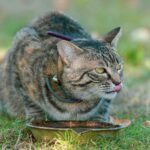What was once described as a cat epidemic in Spain has undergone a remarkable transformation in recent years. Visitors and residents alike have long been familiar with the sight of feral cats roaming Spanish streets, congregating around garbage containers in search of food scraps.
For decades, these feline colonies were viewed as problematic by many citizens who considered them smelly nuisances that posed potential health risks. As recently as 2014, some wildlife protection groups even called for action against feral cats, claiming they threatened bird populations and small mammals.
From Nuisance to Neighbors: Changing Perceptions
Image by pexels
The journey from viewing street cats as pests to seeing them as valued community members didn’t happen overnight. For many years, feral cat colonies faced significant opposition from various segments of Spanish society.
Critics often complained about territorial marking, noise during mating seasons, and unfounded fears about disease transmission. Wildlife conservation groups added their concerns, with one Spanish bird protection society issuing a public statement in 2014 calling for action against feral cats, claiming they were “a threat to small mammals and birds, which they often kill but do not eat.”
These negative perceptions created a challenging environment for the thousands of feral cats across Spain. Unneutered and struggling to survive, many produced multiple litters annually while facing tragically short lifespans due to health issues, malnutrition, or traffic accidents.
Today, however, the overwhelming sentiment has shifted dramatically. More Spaniards now recognize these animals as sentient beings deserving of compassion and protection rather than eradication.
Legislation and Community Action Drive Change
Image by pexels
The turning point in Spain’s relationship with its feral cat population came in 2008 with groundbreaking legislation that made poisoning cats illegal. This law, coupled with increased police action against animal cruelty, marked the beginning of a new approach to managing feral cat populations.
Instead of elimination, local authorities were encouraged to implement Trap-Neuter-Return (TNR) programs, which have proven to be the most effective method for humanely controlling colony numbers. Though the procedures can cost between €40 and €200 per cat, numerous animal charities and compassionate individuals throughout Spain have stepped forward to cover these expenses.
Community involvement extends beyond financial support. Many kind-hearted residents now regularly provide food for local colonies and keep watchful eyes on their welfare. British expatriates living in Spain have been particularly active in these efforts, finding it difficult to ignore the plight of needy feral cats and kittens in their neighborhoods.
Building Trust and Understanding Feral Cats
As Spain transitions into a more cat-friendly society, there’s growing recognition that feral cats differ significantly from their domesticated counterparts. While equally special, street cats typically show fear and avoid human contact – behaviors that stem from their survival experiences rather than their intrinsic nature.
Animal welfare advocates emphasize that gaining a feral cat’s trust represents an incredibly powerful experience. It requires patience, consistency, and understanding that these animals didn’t choose their difficult circumstances but were simply born into challenging conditions on the streets.
Local animal charities continue to educate the public about these differences while encouraging compassionate approaches to colony management. Their message is simple yet profound: these cats deserve kindness and protection precisely because they had no choice in their fate.
The transformation of Spain from a country grappling with what some called a cat epidemic to a society that embraces and protects its feline populations demonstrates the power of combined legislative action and grassroots compassion. With continued support for sterilization programs and growing public awareness, the future looks brighter for Spain’s street cats than ever before.






